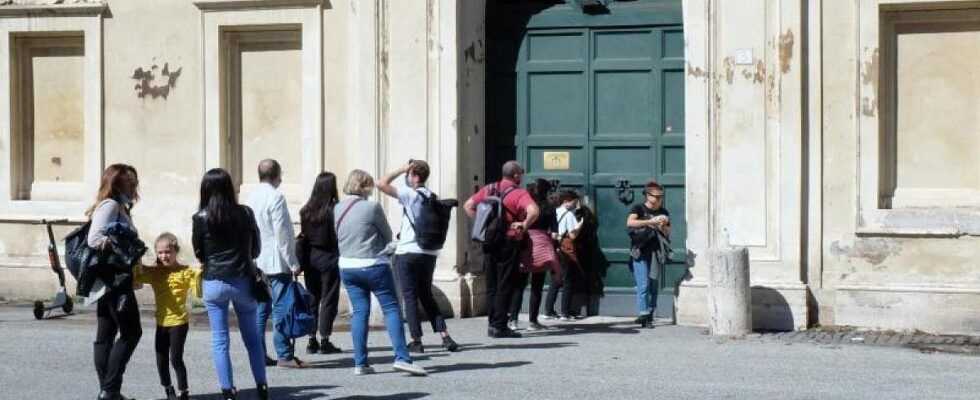Insider tip for Rome visitors: The view created by the architect Piranesi through the keyhole of an inconspicuous gate onto St. Peter's Basilica. The film industry is copying from Piranesi elsewhere.
On any given day, a line of people forms in front of a large green gate on the Aventine, one of the seven hills of Rome – although the gate is always closed.
The attraction is the keyhole of the gate, which allows a spectacular view of the dome of St. Peter's Basilica, framed by a dense tunnel of laurel trees. The world-famous building thus appears much larger, as if viewed through binoculars.
Visitors to Rome are delighted by the magical view through the keyhole
This optical illusion has become one of the highlights on the Rome tourist list. It is the work of Giovanni Battista Piranesi, an architect and graphic designer from the 18th century. Piranesi, who was born in Venice, is remembered 300 years after his birthday on October 4, 1720, primarily for his "Carceri" series – dungeon scenes.
The Aventine, however, houses its only surviving architectural work. Piranesi created the laurel tree avenue between 1764 and 1766 when he redesigned the headquarters of the Knights of Malta on the Aventine. As part of his commission, he designed a new public square, the Piazza dei Cavalieri di Malta, adorned with obelisks and trophies. This is exactly where tourists gather today to stand in line for the keyhole view.
A special church
Piranesi also renovated the church of Santa Maria inside the complex behind the gate. The church dates from the 10th century and is one of the hidden gems of the Eternal City. He gave the church a new facade and also redesigned the interior, borrowing from ancient Roman and Egyptian iconography, to honor the knights and the family of the Venetian cardinal who commissioned the work.
The outer decorations include helmets, swords, shields and crescents wrapped in chains, symbolizing the historic defeat of the Ottoman Empire in the naval battle of Lepanto against the Holy League in 1571.
The interior of the church is a mausoleum that houses the graves of several former religious leaders. The ashes of the great man himself – Piranesi – and a statue that shows him dressed in a toga like a Roman from ancient times can also be found there.
The church is usually not open to the public, but guided group visits are possible by prior arrangement
.
Tangled stairwells
Piranesi's greatest legacy remains his graphic art: His work ranges from dramatically epic landscape views of 18th century Rome to the more disturbing "Carceri" series.
These dungeon drawings and engravings show a hell of a jumble of chains as well as impossibly high vaults and stairs that lead to nowhere and have fascinated generations of architects, painters, writers and set designers.
According to several critics, even the world of cinema has not withdrawn from Piranesi's influence: echoes of his “Carceri” can be seen in Metropolis, Blade Runner and Harry Potter's moving staircases.
